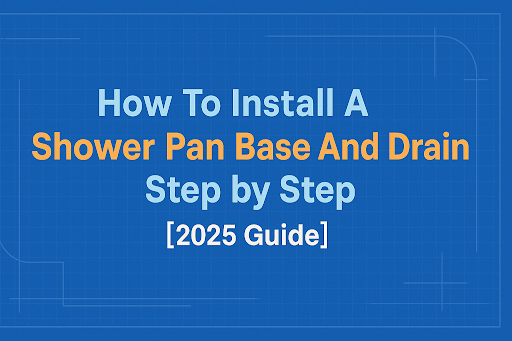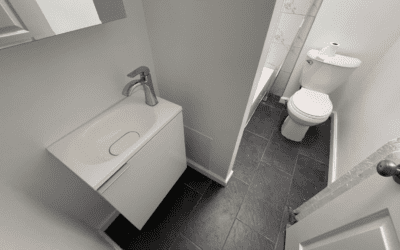When it comes to renovating your kitchen, one of the most significant decisions you will make is whether to reface your cabinets or replace them entirely. Kitchen cabinets play a crucial role in the functionality, aesthetics, and value of your home. Both cabinet refacing and replacement offer different advantages, costs, timelines, and customization options, which makes it essential to understand which option best fits your needs and budget. In this comprehensive comparison guide, we will explore everything you need to know about Kitchen Cabinet Refacing vs Replacement, including the pros and cons of each approach, their costs, time frames, and how they affect the overall look of your kitchen. By the end of this guide, you’ll be equipped with the knowledge to make an informed decision for your next kitchen renovation project.
What is Kitchen Cabinet Refacing?
Cabinet refacing is a home improvement process that involves updating the visible parts of your cabinets, including the doors, drawers, and exterior veneer, without replacing the entire cabinet structure. It keeps the cabinet boxes intact, which makes it a more cost-effective and faster solution for those looking to refresh the look of their kitchen. Refacing typically includes:
- Replacing cabinet doors and drawer fronts: New, high-quality materials like wood, laminate, or veneer are used to create custom door designs.
- Applying new veneer or laminate: The exposed cabinet boxes are covered with a fresh layer of veneer or laminate to give them a clean, modern appearance.
- Upgrading hardware: Cabinet handles, knobs, and hinges are replaced with updated styles to enhance the overall aesthetic.
Refacing works best when the cabinet boxes are still in good condition, but the doors and drawers are outdated or damaged. It’s an excellent option for homeowners who want to give their kitchen a fresh, updated look without the cost and hassle of a full replacement.
What is Kitchen Cabinet Replacement?
In contrast, kitchen cabinet replacement involves completely removing your old cabinets and installing brand-new units. This process gives you a blank canvas for redesigning your kitchen layout, upgrading to higher-quality materials, and achieving a completely new aesthetic. Cabinet replacement includes:
- Demolition of existing cabinets: Your old cabinets, doors, drawers, and hardware are entirely removed.
- Installation of new cabinets: You can choose from a wide variety of styles, sizes, and materials, including custom-built cabinets or pre-manufactured options.
- Full customization: With replacement, you can change the layout of your kitchen, adjust the size of the cabinets, and incorporate modern features like pull-out drawers, lazy Susans, or soft-close hinges.
While cabinet replacement is a more expensive and time-consuming option, it offers greater flexibility, allowing you to completely transform your kitchen space. This option is ideal for homeowners who are unhappy with their current layout, want to address structural issues, or are seeking a more luxurious, long-lasting result.
Kitchen Cabinet Refacing vs Replacement
Cost
One of the primary considerations when deciding between kitchen cabinet refacing vs replacement is cost. The cost of kitchen cabinet refacing is significantly lower than replacement, which makes it an attractive option for homeowners on a budget. According to Modernize, the average cost to reface cabinets typically ranges between $4,000 to $9,500, depending on factors such as the size of your kitchen, the materials used, and whether any additional upgrades (such as new hardware or custom features) are added.
- Materials: The choice of materials for the cabinet doors, veneer, and hardware will impact the cost. For example, real wood veneer is more expensive than laminate.
- Labor: Since the cabinet boxes are not replaced, refacing is less labor-intensive than full replacement, reducing the overall cost.
- Additional Features: If you opt for upgrades like soft-close hinges, custom cabinet doors, or new lighting, the price can increase.
In contrast, cabinet replacement is much more expensive because it involves the demolition of your existing cabinets and the installation of entirely new units. The cost of replacing kitchen cabinets can range from $2,000 to $30,000 or more, depending on the factors outlined below:
- Size of the Kitchen: Larger kitchens will require more cabinets and materials, which increases the overall cost.
- Materials: The choice of materials for the cabinets themselves plays a significant role in the final price. Custom cabinets made from high-quality hardwoods will cost much more than stock or semi-custom units made from plywood or MDF.
- Labor: Since the cabinets are being completely removed and replaced, the labor cost for installation is higher.
- Customization: Any custom features, such as built-in shelving, pull-out drawers, or specialty finishes, will add to the cost.
Time
The time it takes to complete a kitchen cabinet project is another important consideration. Depending on your renovation timeline, the speed of refacing or replacement could influence your decision.
Cabinet refacing is typically much quicker than a full replacement. Since the cabinet boxes are being left intact, the process is less labor-intensive, and installation times are shorter. On average, cabinet refacing takes about 2 to 5 days to complete.
Kitchen cabinet replacement, on the other hand, is a more involved process. It includes demolition, measurement, custom fabrication (if necessary), and installation. As a result, cabinet replacement can take anywhere from 1 to 2 weeks, depending on the complexity of the design and the size of your kitchen. Custom-built cabinets or specialized designs may take longer to manufacture, which could extend the timeline.
Customization
When deciding between kitchen cabinet refacing vs replacement, customization is an important factor. Both options offer customization, but in different ways.
Cabinet refacing allows for some level of customization, especially when it comes to the appearance of your cabinets. You can choose from a wide range of materials, finishes, and styles for the doors, drawer fronts, and veneers. However, the basic layout of your kitchen and the structure of your cabinet boxes remain the same. You can’t change the configuration or size of the cabinets without additional work, which may be impractical or expensive.
In contrast, cabinet replacement offers complete freedom to customize your kitchen. You can select from a variety of cabinet styles, including traditional, modern, rustic, and more. Additionally, you can alter the layout, adjust cabinet sizes, and incorporate innovative features like pull-out shelves, built-in appliances, or custom storage solutions. This level of customization makes replacement the ideal choice if you are looking to completely redesign your kitchen and create a more personalized space.
Durability and Longevity
Durability is a critical factor when deciding whether to reface or replace your cabinets. Both options have different impacts on the long-term lifespan of your kitchen cabinets.
Cabinet refacing is a great option for cabinets that are in relatively good condition but need a cosmetic upgrade. Since the original cabinet boxes are preserved, the durability of the refaced cabinets depends on the quality of the materials used for the new doors, veneer, and hardware. A well-done refacing job can last 10 to 15 years, but the cabinets may not be as durable as completely new units.
Cabinet replacement offers the opportunity to install brand-new cabinets made from the highest-quality materials. If you choose solid wood or custom cabinets, you can expect them to last for 20 years or more. In fact, well-built replacement cabinets can last a lifetime with proper care and maintenance. Additionally, you can select cabinets that are more resistant to wear and tear, such as those with moisture-resistant finishes.
Environmental Impact
If you’re environmentally conscious, it’s important to consider the environmental impact of your renovation.
Cabinet refacing is the more eco-friendly option because it involves reusing the existing cabinet boxes. Refacing minimizes waste by preserving the original structure and only replacing the components that are worn or outdated. Fewer materials are consumed, and less demolition debris is produced.
Cabinet replacement, on the other hand, generates more waste because the old cabinets are completely removed and disposed of. Additionally, manufacturing new cabinets consumes more resources, and the process can contribute to greater carbon emissions compared to refacing.
Resale Value
When it comes to resale value, minor kitchen remodels, including cabinet refacing, typically offer a higher return on investment (ROI) than major kitchen remodels that involve full cabinet replacement. According to the 2024 Cost vs. Value Report, a minor kitchen remodel, which often includes cabinet refacing, delivers an impressive 83.6% ROI in Philadelphia. On the other hand, a major kitchen remodel, including cabinet replacement, offers a significantly lower ROI of just 47.4%.
So, if maximizing resale value is a priority, cabinet refacing presents a more cost-effective solution that boosts your home’s appeal without the hefty investment of a full cabinet replacement.
Disruption
Finally, one of the key considerations when choosing between refacing and replacement is how much disruption each process causes to your home.
Cabinet refacing is generally less disruptive than a full replacement. Since the cabinet boxes remain in place, there’s less demolition involved. The process typically takes 2 to 5 days, and the kitchen is still mostly functional, with limited mess and downtime. Refacing is a great option if you’re looking for a quick kitchen update without major disruptions to your daily routine.
Cabinet replacement, on the other hand, is much more disruptive. The process involves complete removal of the old cabinets and installation of new ones, which can result in significant downtime and disruption in your kitchen. Depending on the size of the project, this can take 1 to 2 weeks or longer. If your kitchen is your primary cooking space, you may need to make alternative arrangements during this time.
Table 1: Kitchen Cabinet Refacing vs Replacement
| Consideration | Cabinet Refacing | Cabinet Replacement |
| Budget Constraints | More affordable | Higher investment |
| Time Limitations | Quick installation | Longer project duration |
| Structural Concerns | Suitable if boxes are in good condition | Necessary for damaged cabinets |
| Design Goals | Update existing layout | Redesign layout and functionality |
| Market Positioning | Enhances appeal in mid-range markets | Appeals to high-end buyers |
Conclusion
Choosing between kitchen cabinet refacing vs replacement depends on your priorities, including your budget, timeline, desire for customization, and the condition of your existing cabinets. If you’re looking for a cost-effective and quick way to update your kitchen without the need for structural changes, cabinet refacing is an excellent option. However, if you want to completely redesign your kitchen, address any structural issues, or select high-end materials, cabinet replacement offers more flexibility and longevity.
At Matrix Construction, we tailor every design decision to reflect our clients’ personal preferences while drawing on our extensive experience to ensure the best outcomes. Contact us today for a FREE Consultation and let us help bring your renovation vision to life in Philadelphia or South Jersey.

![Philadelphia Sump Pump Installation Requirements [2025 Guide]](https://matrixgc.com/wp-content/uploads/2025/06/Philadelphia-Sump-Pump-Installation-Requirements-2025-Guide.png)






0 Comments